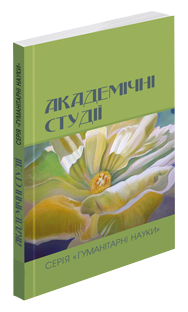Abstract
The article analyzes the lexical composition and artistic means that form the basis for creating the linguistic picture of the world in Maria Matios’ novel “Almost Never the Other Way Around”. A significant group of vocabulary that serves as a marker of the territorial affiliation of the characters consists of dialectisms. The large number of dialect words in the characters’ speech allows readers to associate them with certain social groups. It is also noted that the meaning of the majority of dialect words is clear from the context, although in some cases, the author uses footnotes for clarification (molfaryty, gazduvaty, zakatrupyty, etc.). Equally numerous is the lexical group of household words, colloquial terms that are placed in the mouths of the characters with various purposes: from characterizing a person to providing a specific situation with tragic features, for comparison, or for illustrating life situations. Given that the events in the work take place in the western part of Ukraine, the speech of the characters is saturated with religious vocabulary (names of biblical characters, states, and actions related to the spiritual life of believers: God, Mother of God, sin, prayer, etc.). The analysis of the factual material shows that a large group of artistic images is represented by those whose key word is the lexeme “eyes”. This is an important psychological detail that helps the author focus on the characters’ inner experiences, their feelings, as well as enhance the portrait characteristics of the characters. The article emphasizes that tropes play an important role not only for lyrical, poetic depiction but also for creating prose pictures of human relationships, reflecting life vicissitudes, and sometimes tragedies. They are important for creating the inner world of the characters and their portrait characteristics. The most active artistic means in the analyzed novel were comparisons, differing in structure and type. We identified comparative constructions formed traditionally with the help of conjunctions such as “like”, “as if”, as well as in a nonconjunctional manner; classical comparisons, negation-comparisons, and psychological parallelism-comparisons It is emphasized that metaphors, particularly personifications, metaphorical epithets, and paraphrases, also serve as an active means of creating the linguistic picture of the world. In general, the work notes that the artistic world of Maria Matios’ prose is rich in the presence of linguistic means of depiction.
References
Гримашевич Г. Діалектна лексика у романі Марії Матіос «Мами». URL : https://eprints.zu.edu.ua/39416/1/
Гримашевич_Лінгвостилістика.pdf
Івашина О. О. Психологізм у творчості Марії Матіос: теоретичний та прикладний аспекти. Закарпатські філологічні студії. 2023. Вип. 29. Том 1. С. 269–274.
Котович В. В. Літературно-художні оніми в збірці поезій Марії Матіос «Жіночий аркан у саду нетерпіння». Рідне слово в етнокультурному вимірі. 2023. Вип. 8. С. 73–80.
Купрікова Г. В. Художня архітектоніка та жанрово-композиційні особливості роману Марії Матіос «Майже ніколи не навпаки». Закарпатські філологічні студії. 2024. Вип. 35. С. 297–303.
Матіос М. Майже ніколи не навпаки. Сімейна сага в новелах ; вид. 2-е. Київ : А-БА-БА-ГА-ЛАМА-ГА, 2023. 224 с.
Федурко М. Ю., Котович В. В. Фемінітиви як образотворчі засоби (на матеріалі збірки Марії Матіос «Жіночий аркан в саду нетерпіння»). Закарпатські філологічні студії. 2023. Вип. 32. Том 2. С. 230–235.

This work is licensed under a Creative Commons Attribution 4.0 International License.

